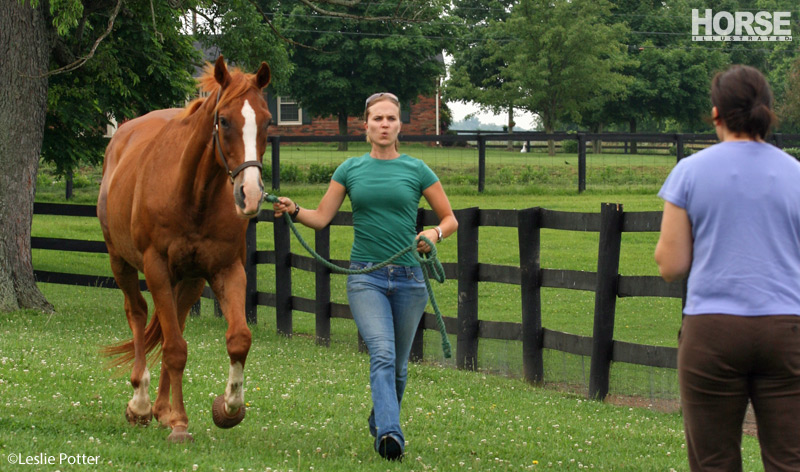
Degenerative Joint Disease
Degenerative joint disease (DJD) is a common occurrence in older, and sometimes not so old, equine athletes. The body is designed to maintain the cartilage in the joints, repairing damage after normal wear and tear. In athletic horses, however, excessive wear can overwhelm the repair process. As forces of movement and impact cause trauma to the cartilage, there is inflammation and an increase in blood flow to the area. This leads to heat and swelling and brings inflammatory enzymes to the joint, which further work to degrade the cushioning cartilage. The result over time is a net loss of cartilage, the hallmark of DJD.
Diagnosis of DJD, once the joint in question has been identified, involves radiography. X-rays will show a decreased joint space, and changes in density and remodeling of the bone in advanced cases.
Management of DJD should be aimed at early intervention and maintaining a healthy population of chondrocytes by reducing inflammation. Chondrocytes (cells that create cartilage) that are kept healthy through rest and the appropriate therapies will continue to repair the damage. Once these cells are lost, however, there is no reversing the process or creating new cartilage.
Changing the horse’s training program to decrease joint trauma will help but isn’t always feasible. Anti-inflammatories such as phenylbutazone (bute), firocoxib (Equioxx) or flunixin meglumine (Banamine) can block the production of the damaging inflammatory enzymes but should be used judiciously as they can have serious side effects on the GI tract and kidneys.
Chondroprotective products such as polysulfated glycosaminoglycan (Adequan) can decrease inflammation, reduce pain and encourage production of cartilage and joint-lubricating fluid. They are only effective if there is some cartilage left. Products that contain hyaluronic acid can mediate inflammation and improve joint function but may not be as effective in promoting new cartilage growth. Joints can also be injected with anti-inflammatory medications such as corticosteroids that will very effectively decrease inflammation, though they do not heal damaged cartilage or aid in new development.





